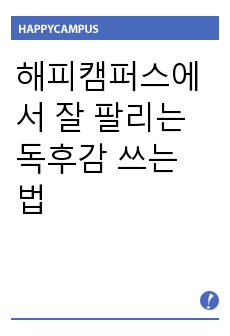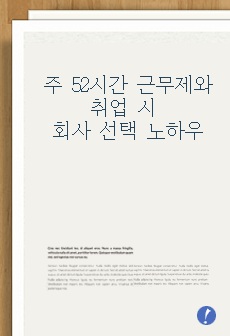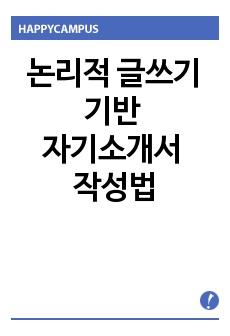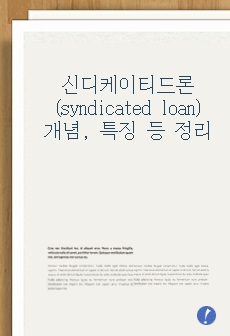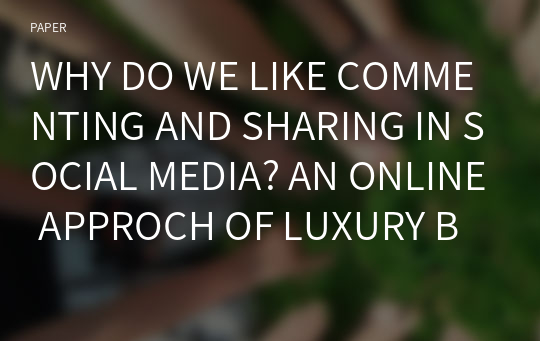WHY DO WE LIKE COMMENTING AND SHARING IN SOCIAL MEDIA? AN ONLINE APPROCH OF LUXURY BRAND COMMUNICATION
* 본 문서는 배포용으로 복사 및 편집이 불가합니다.
서지정보
ㆍ발행기관 : 글로벌지식마케팅경영학회(GFMC)
ㆍ수록지정보 : Global Marketing Conference
ㆍ저자명 : Xiaoming Lu, Mizan Rahman
ㆍ저자명 : Xiaoming Lu, Mizan Rahman
영어 초록
Using the framework of social support, we aim to examine factors influencing social Word-of-Mouth (WOM) adoption. The proposed research model will be tested among customers who are active in the existing active social media platforms and have had experience in engaging with the activities of luxury brand communications.Introduction
Today the most promising communication environment for reaching and interacting with stakeholders is the social media ecosystem (Hanna, Rohm and Crittenden, 2011). The social media has grown so rapidly in the past years that now impact the business processes and models (Henning-Thurau, Hofacker and Bloching, 2103). Many Brands begin to take advantage of the fluidity between social media and WOM for creating brand experiences that merge real and digital conversations, cutting through in incredibly powerful ways. However, the recent research (Godey, Manthiou, Pederzopli, Rokka, Aiello, Donvito and Sigh, 2016) suggest that luxury brands performing well in social media engagement. However, they are often lagged behind in WOM performance. Despite growing interest in examining the influence of social media marketing on consumer’s responses through brand equity creation (Godey et al., 2016; Jim and Ko, 2012), studies about social media in luxury brand communications remain to be scarce. An investigation of customer’s motivation behind participation in social media is timely and relevant which can help luxury brands unleash its potential. Moreover, development of an effective social WOM adoption model can help to provide a better picture of consumer interactions in online luxury brands communities, thus strengthen customerfirm relationship in longer term. Specifically, this research intends to answer the following two questions: 1) What are the major determinants of social WOM adoption in luxury brands communications? 2) Whether social support affects a. perceived source credibility; b. perceived information quality; c. user experience?
Literature review
Social media interactivity
The concepts of social exchange (Blau, 1964) and the norm of reciprocity (Gouldner, 1960) have long been used by Marketing researchers to describe the motivational basis behind customer behaviours and the formation of positive relational attitudes (e.g., Wulf; Gaby; Iacobucci, Dawn, 2001; Rafiq; Fulford and Lu 2013). More recently these concepts have been used to explain why customers enjoy interacting with each other in social media (Liang, Ho, Li and Turban 2012; Godey et al., 2016). Social media interactivity is social interaction of people in social networking sites by Web 2.0 technologies such as Facebook, Instagram (Hajli, 2016). For instance, Facebook has more than two billion monthly active users which is a great example of a platform. In fact, people love to interact with each other. When they favourite and like each other’s posts that would reinforce the closeness.
Online social support
Recent research has found that social interaction can bring social value to their users and that the social media is a powerful vehicle for an individual to build close relationships with others and to enhance the individual’s well-being (Liang et al., 2012; Eastin and LaRose, 2005; Obst and Stafurik, 2010; Shaw and Grant, 2002; Xie, 2008). Social support has been found to be a major social value that social media users can obtain from an online interactions (Eastin and LaRose, 2005; Obst and Stafurik, 2010; Huang, Nambisan and Uzuner, 2010). Social support is a multidimensional construct which refers to an individual’s experience of being cared for, being responded to, and being helped by people in that individuals’ social network (Cobb, 1976). Schaefer, Liang et al.(2012) claim that , online social support consists both tangible (e.g. instrumental and appraisal support) and intangible elements (e.g. informational and emotional support). Given the specific context, this study mainly focuses on the latter. Informational support refers to providing messages, in the form of recommendations, advice, or knowledge that could be helpful for solving problems. By contrast, emotional support refers to providing messages that involve emotional concerns such as caring, understanding or empathy. These two types of messages are the major support mechanisms for social interactions (Hajli, 2016).
Antecedents of social WOM adoption
Information adoption can be defined as the process of engaging purposefully in consuming information (Cheng and Thadani, 2012). Informational support provided through social interaction of individuals in social media can be in the form of ratings, review, recommendations or referrals. Therefore, when consumers search for information provided by other users to make a better decision for their purchasing, they are adopting information. From a marketer’s perspective, this process also helps to build long-term advocacy. This research argues that social media provides more opportunities to the individual to adopt WOM. The existing literature has identified several antecedents of social WOM adoption and most of these studies focused on travelling websites (Filieri; Alguezaui and McLeay,2015; Hajli, 2016). Beldad, De Jong, Steehouder (2010) have categorized the major antecedents of social WOM adoption in the literature into three categories namely customer-based antecedents (e.g. user’s experience during the social interactions); website based antecedents (e.g. perceived information quality) and company based antecedents(e.g. perceived source of credibility). Source of credibility is considered as fundamental predictors of consumers’ acceptance of a message in traditional WOM adoption (McGinnies and Ward, 1980). To facilitate the evaluation of credibility of a source, more and more social platforms require contributors to create a web profile upon their registration. Customers need to provide personal information (e.g. profile picture, personal preference). Furthermore, many social media website utilise reviewer reputation systems to enable customers to assess the credibility of reviewers. Zhang and Watt (2008) argue that the higher source credibility of message perceived in online social media, the higher level of information adoption would be. Moreover, the quality of information in online reviews is perceived as a very important cue for consumers to assess the website (Filierri, et al., 2015). Krishnan; Biswas and Netemeyer (2006) point out that concrete information provided by the website such as detailed features of the product/service is likely to be perceived as more credible than those from abstract information like peripheral description of the product/service. Finally, in marketing literature user experience is strongly related with trust (Yoon, 2002). In an online context customers’ negative experience is likely to affect their trust about the company. As a consequence, they are likely to engage in negative WOM. Research shows that user experience has a strong impact on the social WOM adoption (Liang et al., 2012).
Method
Structural Equation Modeling (SEM) will be employed for examining the research objectives of this research. The questionnaire for this study will be created through a professional online-based survey tool. As this research focuses on the factors influencing social WOM adoption in relation with luxury brands communications, the proposed research model will be tested among customers who is active in the existing active social media platforms and has had experience in engaging with the activities of luxury brand communications such as posting review or comment other’s post).
Result and conclusion
This research has adopted the electronic WOM theory and the social media support theory along with a social media perspective to investigate how customer’s interaction in social media affects their behaviour in relation to luxury brands consumption. The results show that social WOM facilitates the evaluation by customers about the luxury products using social media. Moreover, WOM has emerged with broad accessibility and the capability to be evaluated and measured easily by other consumers. This study gives practical implications on how to use social media to develop online communities for luxury brands. In conclusion, when going online, luxury brand should consider the importance of converting the online brand strategy into an interactive and engaging experience for their users and online communities.
참고 자료
없음"Global Marketing Conference"의 다른 논문
 THE ROLES OF GREEN PACKAGING IN UGLY FOOD PURCHASE INTE..22페이지
THE ROLES OF GREEN PACKAGING IN UGLY FOOD PURCHASE INTE..22페이지 THE IMPACT OF INDUCED AWE ON ETHICAL TOURIST BEHAVIORS5페이지
THE IMPACT OF INDUCED AWE ON ETHICAL TOURIST BEHAVIORS5페이지 A BIBLIOMETRIC ANALYSIS OF SPIRITUAL TOURISM RESEARCH15페이지
A BIBLIOMETRIC ANALYSIS OF SPIRITUAL TOURISM RESEARCH15페이지 SOCIAL NETWORK ANALYSIS AND RESPONSE TIME TESTING: CONS..11페이지
SOCIAL NETWORK ANALYSIS AND RESPONSE TIME TESTING: CONS..11페이지 THE EFFECTS OF PARA-SOCIAL INTERACTION ON ONLINE CELEBR..3페이지
THE EFFECTS OF PARA-SOCIAL INTERACTION ON ONLINE CELEBR..3페이지 THE INFLUENCE OF OPINION LEADERS ON DAILY DEALS USER’S ..3페이지
THE INFLUENCE OF OPINION LEADERS ON DAILY DEALS USER’S ..3페이지 HOW IMMERSIVE RETAILING AFFECTS CONSUMERS’ URGE TO BUY:..6페이지
HOW IMMERSIVE RETAILING AFFECTS CONSUMERS’ URGE TO BUY:..6페이지 KEY TO SUPERSTARDOM IN A GLOBALISED MARKET: THE ROLE OF..6페이지
KEY TO SUPERSTARDOM IN A GLOBALISED MARKET: THE ROLE OF..6페이지 A POST-PANDEMIC LOOK AT TOURISTS’ PERCEIVED COOLNESS OF..4페이지
A POST-PANDEMIC LOOK AT TOURISTS’ PERCEIVED COOLNESS OF..4페이지 EXTRACTING OFFLINE RETAIL SHOPPING PATTERNS: OLLABORATI..5페이지
EXTRACTING OFFLINE RETAIL SHOPPING PATTERNS: OLLABORATI..5페이지










